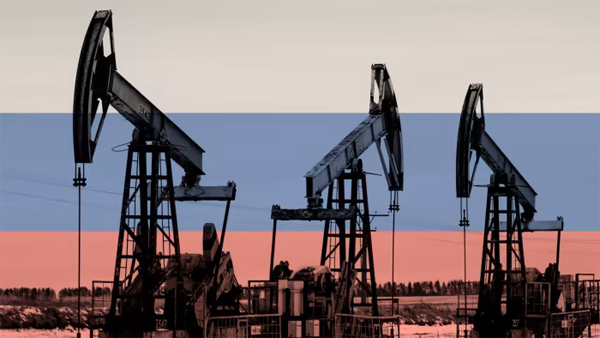
Myra Saefong and William Watts, MarketWatch
SAN FRANCISCO/NEW YORK
EnergiesNet.com 04 22 2022
Oil futures finished higher Thursday, but below the session’s best levels, as the European Union continued to mull the prospect of banning imports of Russian crude.
Price action
- West Texas Intermediate crude for June delivery CL.1, -0.62% CL00, -0.62% CLM22, -0.62% rose $1.60, or 1.6%, to settle at $103.79 a barrel on the New York Mercantile Exchange after trading as high as $105.42.
- June Brent crude BRN00, -0.69% BRNM22, -0.65%, the global benchmark, added $1.53, or 1.4%, at $108.33 a barrel on ICE Futures Europe.
- May gasoline RBK22, -1.00% added 1.6% to $3.339 a gallon.
- May heating oil HOK22, 0.06% lost 1.8% to $3.901 a gallon.
- May natural gas NGK22, -0.20% edged up by 0.3% to settle at $6.957 per million British thermal units.
Market drivers
European Union countries are edging closer to a plan to eventually phase out imports of Russian oil, news reports said. The U.S. and U.K. previously moved to implement bans in response to Russia’s invasion of Ukraine, while the EU has moved more slowly amid resistance given the region’s heavy reliance on energy supplies from the country.
“More likely will be a gradual phasing out of Russian oil, much like we are seeing with coal,” said Warren Patterson, head of commodities strategy at ING, in a note.
“A gradual phasing out would give time for trade flows to adjust in a more orderly fashion and so the impact on price would be more limited compared to an immediate ban,” he said.
U.S. Treasury Secretary Janet Yellen on Thursday said during a press conference that it was essential for the European Union to end its dependence on Russian energy, but also warned that a total embargo on energy imports from Russia would lead to sharp prices increases in Europe, according to a report from The Hill.
Yellen “realizes that a total ban on Russian oil and gas could have consequences for Europe’s economy,” said Phil Flynn, senior market analyst at The Price Futures Group.
Also, “if you look at distillate supplies here in the United States, they have fallen to dangerously low levels,” the lowest level since 2008, and if Russia cuts distillate supplies to Europe, that’s going to further squeeze U.S. supplies, he told MarketWatch.
Moscow said it submitted a draft of its demands for ending the war, while the U.S. and its allies raced to supply Ukraine with heavier weapons to counter the Russian offensive in Ukraine’s industrial east. Britain’s Defense Ministry said in an assessment that Russia likely wants to demonstrate significant successes ahead of its annual May 9 Victory Day celebrations.
For now, the uptrend for oil is “not only supported by the abrupt withdrawal of oil from Russia and the accompanying decline in production there,” said Alex Kuptsikevich, senior market analyst at FxPro. “There are also shipment problems in Libya and prolonged pipeline repairs in Kazakhstan.”
Libya’s National Oil Corporation on Wednesday said 550,000 barrels a day of production is being lost due to blockades on major oilfields and export terminals, Reuters reported.
Meanwhile, oil producers in the U.S. seem to be “stepping up,” Kuptsikevich said in emailed commentary.
Total U.S. domestic petroleum production rose by 100,000 barrels to 11.9 million barrels per day for the week ended April 15 — the highest weekly production level since the week ended May 1, 2020, Energy Information Administration data show.
On Thursday, weekly data from the EIA showed domestic natural-gas supplies rose by 53 billion cubic feet for the week ended April 15. That compared to a forecast for a build of 33 billion cubic feet from Marshall Steeves, energy markets analyst at S&P Global Commodity Insights.
marketwatch.com 04 21 2022












